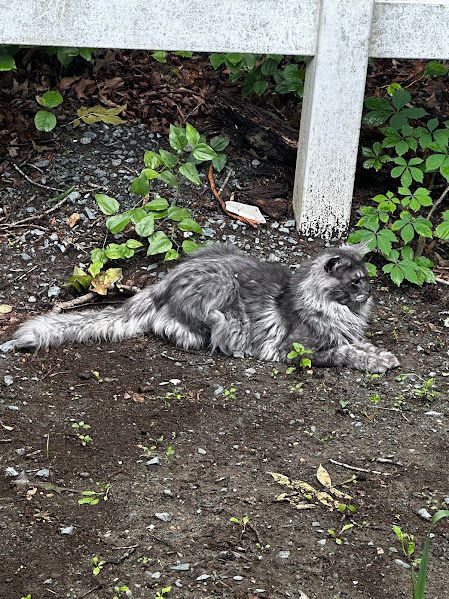Where did Maine Coons Originate
- Tammy Limer
- Jan 7
- 3 min read
Updated: Feb 15

Maine Coon cats originate in Wiscasset, Maine where this rugged cat developed distinctive features, such as a bushy tail and a semi-water-resistant coat to survive the harsh winters.
Recognized as one of the oldest natural breeds in the United States, this long-haired cat is famous for being the largest domestic cat breed in the world. It is also considered a descendant of the Norwegian Forest Cat.
Whilst the origins of the Maine Coon at breed are steeped in mystery and intrigue, it is generally accepted that these long-haired cats originate in North America.
Thought to be direct descendants of Norwegian Forest Cats, history tells varying legends of how these longhaired cats first arrived in Maine.
The following three Maine Coon myths claim to explain how the Maine Coon cat breed came to be a native of the state of Maine.
Maine Coons Are Part-Raccoon
One of the most popular Maine Coon myths is that these large cats are part raccoons and the result of a semi-wild domestic cat mating with a raccoon.
This myth rose to popularity because the Maine Coon and Raccoon are visually similar and have the following distinctive features:
Long Bushy Tail
Water-Resistant Coat
Thick Fur
Brown Tabby Colorings
Black Ring On Tail
Massive Size
Semi-Prehensile Paws
Love Of Water
Great Climbers
The Raccoon cat myth initially gained support because both Maine Coons and Raccoons have semi-prehensile paws that help them hold onto their meals.
Some Maine Coon cats were also found to have an unusual black ring around their tails, like raccoons do.
Despite the undeniable similarities between these two species, scientists have now discredited this myth stating it is biologically impossible.
Furthermore, while some Maine Coons and Raccoons do share a similar brown tabby coloring, the Maine Coons thick coat comes in 75 different colors.
Viking Ship Cat Myth Viking Ship Cat Myth
The premise of this myth is that Maine Coon descend from the Norwegian Skogkatt or Norwegian Forest Cats kept aboard Viking Ships.
The Norwegian Skogkatt and its counterparts, the Swedish Rugkatt and Danish Racekatte all evolved in harsh climates, and are physically similar to the Maine Coon.
The Vikings found these longhaired cats to be effective mousers able to protect their stock, so liked to travel the seas with these large felines.
According to The International Cat Association (TICA), many Maine Coon breeders think Maine cats evolved when local short-haired cats bred with these long-haired cats from overseas, whilst the boats were moored up on land.
Marie Antionette Myth
The final myth claims there is a link between purebred Maine Coon cats and royalty!
History tells us that during the French Revolution, Marie Antoinette (former Queen of France) fled France on a ship captained by Captain Charles Coon.
Not willing to abandon her six Turkish Angora cats in France, she arranged for her pet cats to be loaded onto the ship with her.
Marie Antoinette’s attempt to escape proved fruitless and she was executed in 1793. However, Captain Samuel Clough kept his promise and released the cats when his ship docked at Wiscasset, Maine.
It is thought these six long-haired cats went on to mate with short-haired local domestic cats residing in Maine, thereby producing the Maine Coon cat breed.
Over the years there has been much debate regards the Maine Coon’s origins. So, where do Maine Coon cats come from?
Whilst the history of the Maine Coon cat will always remain a mystery, cat experts agree these large cats are not the result of a hybrid between a semi-wild cat and a raccoon.
Instead, it is more likely that Maine Coons are descendants of the Norwegian Forest Cat, also known for its big build, massive size, and long hair.
Wherever they come from, these sometimes polydactyl cats make great family pets.










Comments